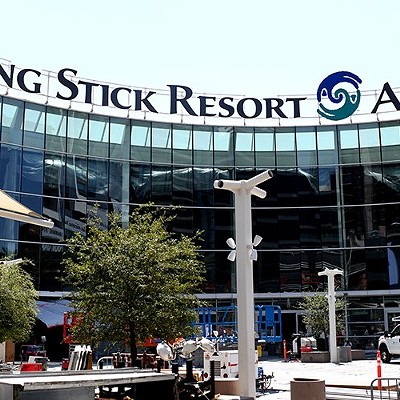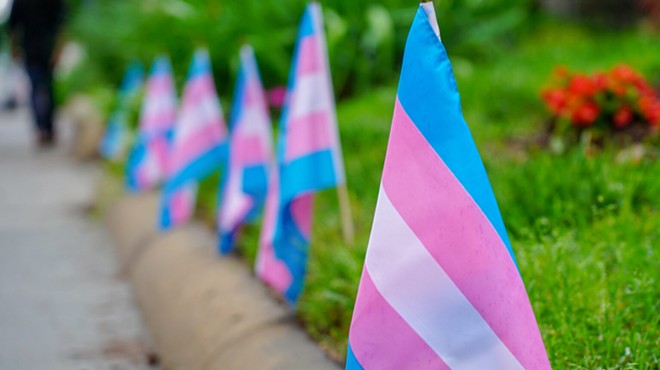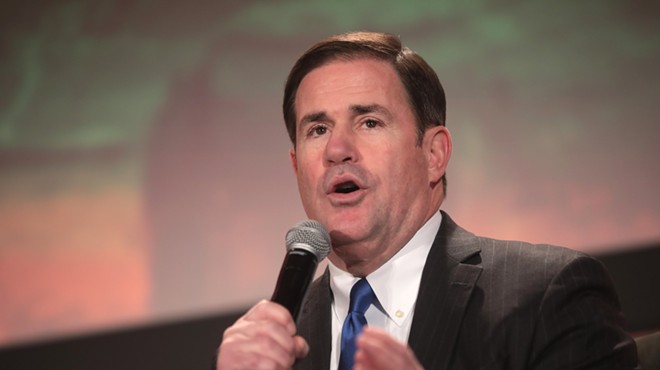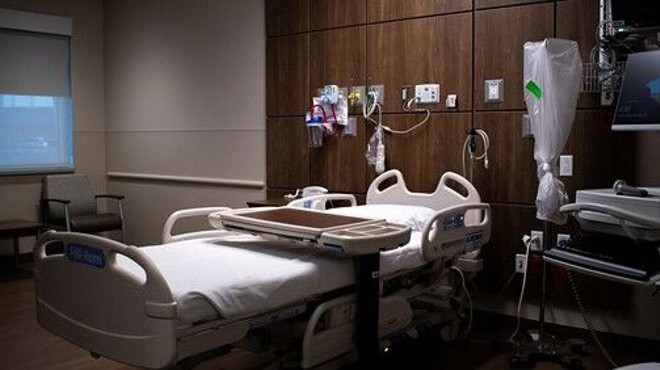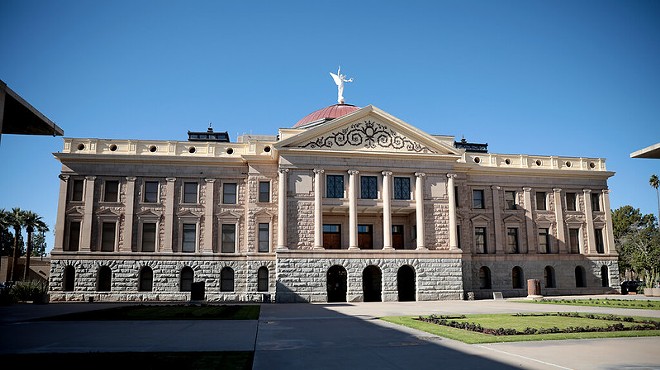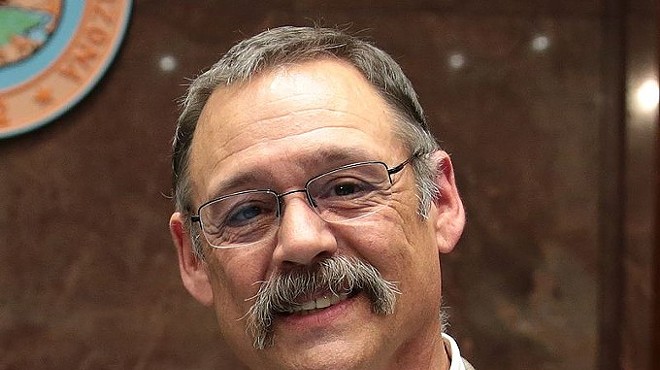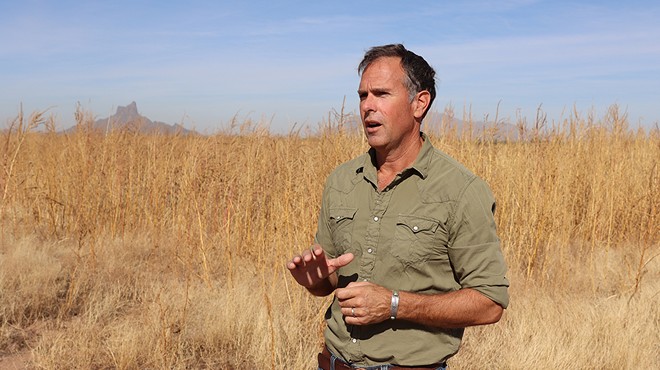Wednesday, September 9, 2020
Your Southern AZ COVID-19 AM Roundup for Wednesday, Sept. 9: Special Six Months of Coronavirus Edition
It’s been six months since March 9, when local officials including Tucson Mayor Regina Romero held a press conference, warning that the virus had arrived in Pima County.
In that time, we’ve seen Arizona become a global hotspot for the virus, but in recent weeks, the numbers have declined as more people wear masks, avoid crowds and stay at home unless they are making an important trip.
Today’s numbers
With 496 new cases reported today, the number of Arizona’s confirmed novel coronavirus cases reached 206,541 as of Wednesday, Sept. 9, according to the Arizona Department of Health Services.
Pima County had seen 22,071 confirmed cases.
A total of 5,251 Arizonans had died after contracting COVID-19, including 596 deaths in Pima County, according to the Sept. 9 report.
The number of hospitalized COVID cases continues to decline from July peaks. ADHS reported that as of Sept. 8, 658 COVID patients were hospitalized in the state. That number peaked at 3,517 on July 13.
A total of 843 people visited emergency rooms on Sept. 8 with COVID symptoms. That number peaked at 2,008 on July 7.
A total of 203 COVID-19 patients were in intensive care unit beds on Sept. 3, the lowest that number has been since April 8, when 155 people were in ICU. The number of COVID patients in ICUs peaked at 970 on July 13.
The COVID Curve
On a week-by-week basis in Pima County, the number of positive COVID tests peaked the week ending July 4 with 2,398 cases, according to a Sept. 4 report from the Pima County Health Department. While a vocal minority continues to insist that masks do no good, the spread of the virus began to decline within weeks of Pima County’s mask mandate, as more people began wearing them in public. For the week ending Aug. 22, the number of new cases dropped to 495 and for the week ending Aug. 29, 455 new cases were reported.
Deaths in Pima County are down from a peak of 54 in the week ending July 4 to 20 for the week ending Aug. 15 and 13 for the week ending July 22. (Note that these numbers are subject to revision as recent cases and deaths may not have been reported.)
Hospitalization peaked the week ending July 18 with 239 COVID patients admitted to Pima County hospitals. For the week ending Aug. 29, 30 COVID patients were admitted to Pima County hospitals.
Pima County demographics
With the six-month mark upon us, here are some numbers from Pima County:
On a week-by-week basis, the number of positive COVID tests peaked the week ending July 4 with 2,398 cases, according to a Sept. 4 report from the Pima County Health Department. While a vocal minority continues to insist that masks do no good, the spread of the virus began to decline within weeks of Pima County’s mask mandate as more people began wearing them in public. For the week ending Aug. 22, the number of new cases dropped to 495 and for the week ending Aug. 29, 455 new cases were reported. Deaths in Pima County are down from a peak of 54 in the week ending July 4 to 20 for the week ending Aug. 15 and 13 for the week ending Aug. 22. (Note that these numbers are subject to revision as recent cases and deaths may not have been reported.)
Here’s a look at Pima County’s COVID demographics as of Sept. 4:
• The disease has spread the most among working-age residents, with 62 percent of those infected between the ages of 20 and 54. Here’s how the numbers break down: Nearly half of those who tested positive, or 47 percent, were between the ages of 20-44; 15 percent were between the ages of 45-54; 12 percent were between the ages of ages 55-64; 13 percent were 65 and older; and about 12 percent were younger than 20.
• Females were slightly more likely to test positive, with women accounting for 52 percent of cases.
• Race was unknown in 31 percent of cases but among those for whom race was known, 35 percent were Hispanic, 23 percent were non-Hispanic white, 3 percent were Native American, 3 percent were Black and 1 percent were Asian/Pacific Islander.
Many of those cases were asymptomatic or mild. But among the 2,024 serious cases that required hospitalization, about 39 percent of those hospitalized were 65 and older. Just under one in four—24 percent—of those hospitalized were between 20-44 years old; 19 percent were between 55-64; 14 percent were between the ages of 45-54; and just 3 percent were younger than 20.
The death toll hit seniors harder than anyone, with those 65 and older accounting for 77 percent of deaths. Nearly 15 percent of those who died were 55 to 64 years old; roughly 5 percent of those who died were 45 to 54; and 3 percent were 20 to 44.
When it comes to Pima County hospitals: At the peak of the crisis, local hospitals were so jammed that COVID patients were being transferred to Phoenix or neighboring states. Hospitalization peaked the week ending July 18 with 247 COVID patients admitted to Pima County hospitals. For the week ending Aug. 29, that number was down by roughly 88 percent, with just 30 COVID patients admitted to Pima County hospitals.
The unemployment insurance bump is nearly over
Arizona’s job losses during the pandemic have been massive. The state has lost an estimated 135,000 non-farm jobs from the February 2020 peak of 2,968,000, according to the Arizona Office of Economic Opportunity; as of July, that number of jobs had dropped to 2,833,000, or about where Arizona’s job numbers were in winter 2018. Still, the state has recovered 141,000 jobs from April 2020, when the total number of jobs dropped to 2,692,000 during Ducey’s initial stay-at-home order.
Arizona’s unemployment numbers in July were at 10.6 percent, more than double what they were in March.
To make matters worse, many out-of-work Arizonans will be trying to scrape by on just $240 per week once a federal program aimed at helping those who don’t qualify for unemployment benefits runs out of money unless Congress can break a stalemate on new relief measures.
State officials are unclear on when the Lost Wage Assistance program—which adds an extra $300 of federal money to the state's unemployment maximum—will end. They anticipate it will be soon.
Arizona Department of Economic Security Director Michael Wisehart was unable to give an exact date on when LWA would be exhausted during a recent Zoom meeting with reporters. The director could only confirm DES would have little notice when it happens and the program will end “abruptly.”
Wisehart was able to give advice to those potentially affected by the program’s commencement.
"Getting the word out that individuals need to continue to plan, need to continue to work with their congressional delegation to express the need that is going to continue to exist in Arizona as we move forward," Wisehart said.
LWA is funded through an emergency FEMA grant President Trump approved after the White House and congressional Democrats were unable to make a deal on a new coronavirus relief package to extend the previous $600 given as a part of CARES Act’s Pandemic Unemployment Assistance program, which ended on July 31. Essentially, LWA funding allows the PUA program to continue and those funds are distributed by DES.
Federal officials expected LWA funds to be depleted in five weeks, depending on how many states took advantage of the program. Arizona was the first state to use the supplemental unemployment funds in early August. Now, nearly every state is using the $44 billion program and the funding is retroactive to Aug.1.
A sixth week of funding was approved to cover Arizonans who lost wages between the week of Aug. 30 and Sept. 5, however Wisehart said he thinks it would be a “challenge” for the state to continue receiving funds moving forward.
Once the extra $300 in LWA benefits run dry, Arizona’s unemployed will be left to survive on the state’s unemployment maximum payment—$240 a week or less and that is if you qualify.
Those who are self-employed, gig workers or underemployed typically don’t qualify for the state’s unemployment insurance program, said Grand Canyon Institute Research Director Dave Wells. PUA has been a life-saver for many Arizonans, said Wells.
“The key thing to remember about Arizona is unemployment benefits are inadequate,” Wells said. “A lot of people in Arizona would not be able to survive without that $600 supplement that ended in July. Pandemic assistance filled a big- time gap in the state.”
Seniors in assisted living centers and nursing homes can have visitors
One of the most heartbreaking aspects of the virus has been how it has hammered nursing homes where it was able to spread. Out of caution, the state shut down visitation in most nursing homes and kept patients isolated in their rooms, with communal areas closed. But the state has now hit benchmarks that will allow outdoor visitation to resume provided all parties wear facemasks and maintain a physical distance of six feet. Indoor visitation remains off limits.
Ducey: Get a Flu Shot
Gov. Doug Ducey and public health experts are asking Arizonans to get a flu shot to help keep hospital capacity low and available for those with COVID.
The governor said last week that the Arizona Department of Health Services will be implementing an aggressive plan of action during this flu season by distributing the vaccination for free to all Arizonans through doctor’s offices, pharmacies, local health departments and community healthcare centers statewide.
“We don’t want cost to be something that gets in the way of this,” Ducey said. “If you are uninsured or underinsured we want you to get a flu shot and it’s the best thing you can do to add more help to our situation in Arizona.”
Ducey said the overlap with COVID produces greater challenges than a typical flu season and preventing the flu is more important than ever. More than 4,000 people were hospitalized with flu symptoms in Arizona last year and roughly 700 people die from the illness each year, according to the governor.
The state will reimburse Arizona Health Care Cost Containment System providers offering free flu shots to AHCCCS members, while giving AHCCCS members a $10 gift card for their troubles after they've been vaccinated, said Ducey. The governor announced he is also allowing certified pharmacists the ability to administer the vaccine to AHCCCS-enrolled children.
“These actions have led to a 50 percent increase of flu shot administration rates in other states,” Ducey said. “We’re confident they’ll make a big difference in Arizona as well.”
Certain COVID-19 testing sites will also offer flu shots to those getting tested for coronavirus in starting in September, said Ducey. The Arizona Department of Health Services will expand online resources to help the public find free vaccine distribution locations as well as help businesses set up their own flu shot clinics for employees, according to the governor.
“I want to emphasize Arizona’s most important partner in this fight is you, the people of Arizona,” Ducey said. “You’ve made a big difference in where we are today and you could make a huge difference in where we’ll be tomorrow going forward.”
Get tested: Pima County has several testing centers, UA offering antibody testing
Pima County has three free testing centers with easy-to-schedule appointments—often with same-day availability—with results in 48 to 72 hours.
You’ll have a nasal swab test at the Kino Event Center, 2805 E. Ajo Way, and the Udall Center, 7200 E. Tanque Verde Road. The center at the northside Ellie Towne Flowing Wells Community Center, 1660 W. Ruthrauff Road, involves a saliva test designed by ASU.
Schedule an appointment at pima.gov/covid19testing.
The centers are also tied into Pima County’s developing contact tracing operation, which aims to be able to identify potential clusters and warn people if they have been in contact with someone who is COVID-positive.
Meanwhile, the FDA has approved to the University of Arizona’s antibody test. As a result, the testing has now been opened to all Arizonans as the state attempts to get handle on how many people have been exposed to COVID-19 but were asymptomatic or otherwise did not get a test while they were ill.
To sign up for testing, visit https://covid19antibodytesting.arizona.edu/home.
—with additional reporting from Kathleen B. Kunz, Austin Counts, Jeff Gardner and Tara Foulkrod





